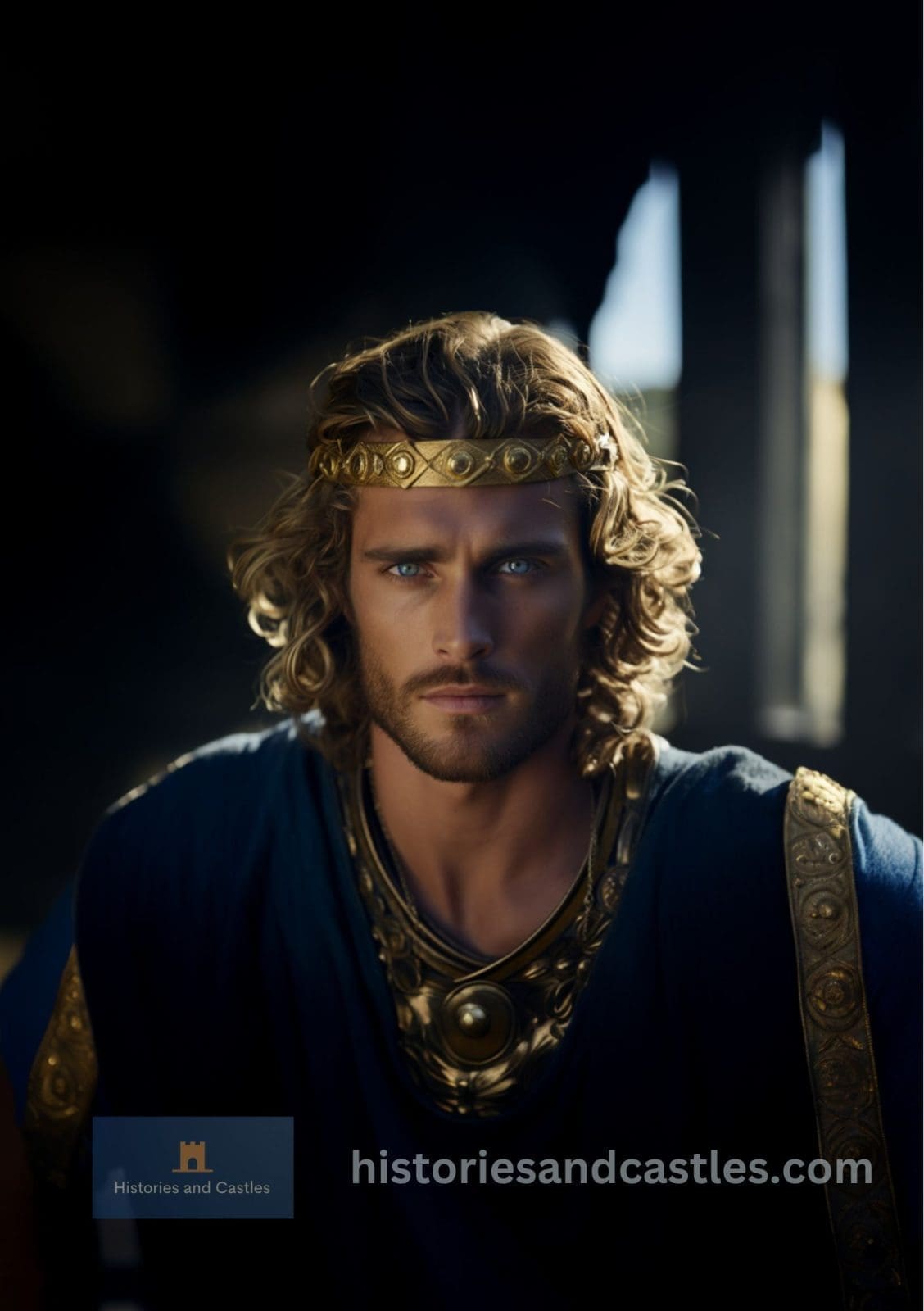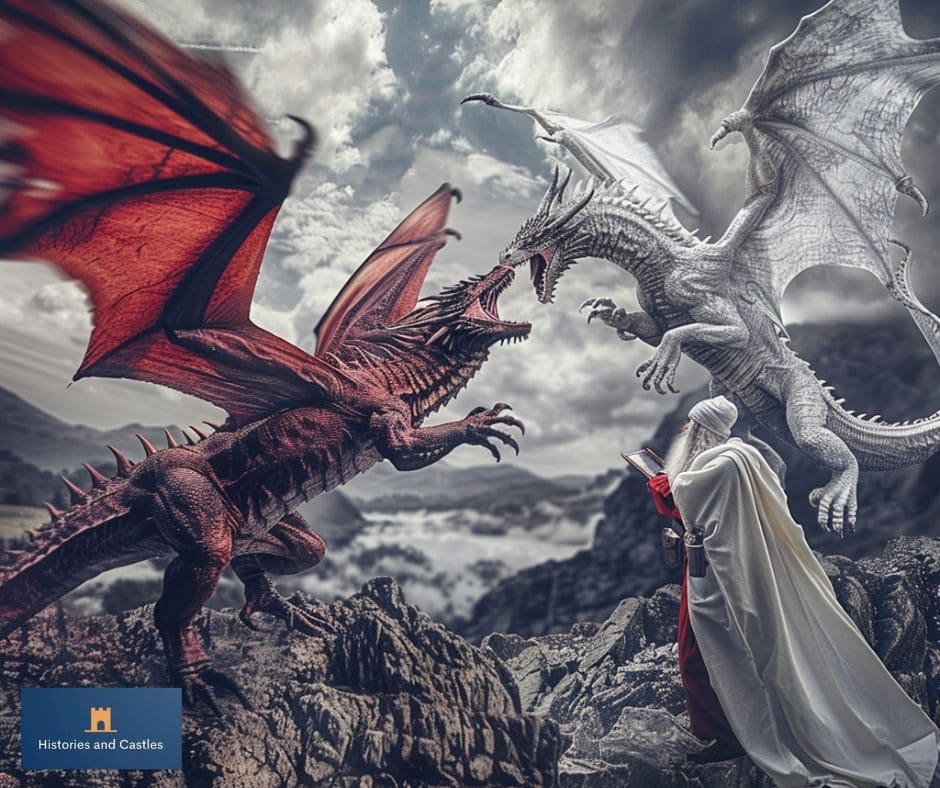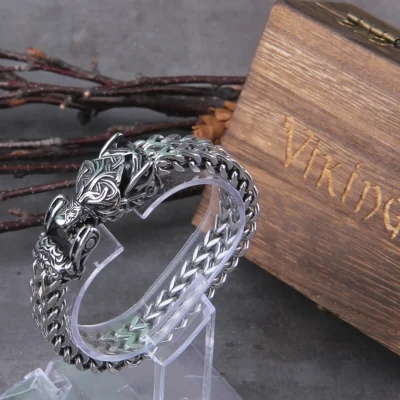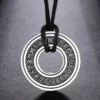Merlin, the legendary wizard of Arthurian legend, is a figure shrouded in mystery and magic. Known for his profound wisdom and supernatural abilities, Merlin’s prophecies have captivated the imaginations of many throughout history. These prophecies, interwoven with myth and historical events, reflect the medieval fascination with fate and the supernatural.
In this article, we will explore some of Merlin‘s most famous predictions, delving into their historical context, interpretations, and impact on literature and culture. From the rise and fall of King Arthur to the symbolic prophecies of dragons, Merlin’s visions offer a glimpse into the medieval mind and its enduring legacy in modern times.
Merlin: The Enigmatic Wizard
Merlin’s origins are as complex as the prophecies attributed to him. He emerges from a blend of historical records and mythological tales, primarily within the Arthurian legends. According to medieval texts, Merlin was a product of both mortal and supernatural parentage, giving him extraordinary abilities that set him apart from other figures in literature and history.
Merlin’s most detailed characterization comes from Geoffrey of Monmouth’s “Historia Regum Britanniae” (The History of the Kings of Britain), written in the 12th century. Geoffrey’s account, while rich in narrative, combines historical elements with fiction, creating an intricate tapestry of Merlin’s life and works. In this text, Merlin serves not only as a prophet but also as a political advisor and a magician, whose actions shape the course of British history.
The Prophecies of Merlin
Merlin’s prophecies are diverse, ranging from the personal fates of individuals to grand visions of national destiny. They are often characterized by their symbolic language and enigmatic nature, making them open to various interpretations over the centuries. Key themes in Merlin’s prophecies include the rise and fall of kingdoms, the inevitability of fate, and the cyclical nature of history.
Famous Prophecies
The Rise and Fall of King Arthur

One of the most significant prophecies attributed to Merlin is the prediction of King Arthur’s birth, his rise to power, and eventual downfall. According to legend, Merlin foretold that Arthur would become a great king who would unite Britain and lead it to a golden age. This prophecy included the circumstances of Arthur’s conception and birth, orchestrated by Merlin himself, who used his magic to enable King Uther Pendragon to be with Arthur’s mother, Igraine.
Merlin’s prophecy also foreshadowed the tragic end of Arthur’s reign. Despite his greatness, Arthur’s kingdom was destined to fall due to betrayal and internal strife. This prophecy culminates in the Battle of Camlann, where Arthur is mortally wounded. The cyclical nature of this prophecy emphasizes the medieval belief in the rise and fall of empires and the inevitability of change.
The Coming of the Saxons
Merlin’s foresight extended beyond individual fates to the broader strokes of history. One such prophecy is his prediction of the Saxon invasion of Britain. Merlin envisioned the coming of a time when Britain would be overrun by foreign invaders, leading to the downfall of the native Britons. This prophecy has been interpreted as a reflection of the historical events of the 5th and 6th centuries, when Anglo-Saxon tribes invaded and settled in Britain, significantly altering its cultural and political landscape.
The Prophecy of the Two Dragons
Among Merlin’s most famous and symbolically rich prophecies is the tale of the two dragons. According to legend, Merlin predicted a battle between a red dragon and a white dragon, representing the struggle between the native Britons (red) and the invading Saxons (white). This prophecy is deeply rooted in Welsh mythology and reflects the historical conflicts between these two groups.
The prophecy of the two dragons not only symbolizes the clash of cultures but also serves as a reminder of the enduring spirit of the Welsh people. It is a powerful example of how Merlin’s prophecies blend myth, symbolism, and historical reality.

Interpretations and Impact
Merlin’s prophecies have been subject to various interpretations throughout history. In the medieval period, they were often seen as divine revelations, imbued with a sense of inevitability and moral lesson. Scholars and chroniclers used these prophecies to explain and justify historical events, weaving them into the broader narrative of British history.
The influence of Merlin’s prophecies extends beyond historical texts into literature and popular culture. Writers like Alfred Lord Tennyson and Thomas Malory have drawn upon Merlin’s predictions in their works, further cementing his place in the literary canon. In modern times, Merlin’s prophecies continue to inspire adaptations in books, films, and television, reflecting their timeless appeal and the enduring fascination with the mystical and the unknown.
You Might Like These
-
Born of Fire Made of Legend T-Shirt – Welsh Dragon Design
Price range: £19.10 through £35.86 -
Cymru Welsh Dragon Minimalist T-Shirt – Gildan 5000
Price range: £19.10 through £32.90 -
The Red Dragon Rises T-Shirt – Welsh Dragon Shirt
Price range: £19.50 through £27.99 -
Believe in Dragons T-Shirt
Price range: £19.10 through £35.86
Debunking the Myths
Despite their legendary status, Merlin’s prophecies are not without controversy. Many historians and scholars question the authenticity of these predictions, viewing them as later additions or fabrications rather than genuine foresight. Geoffrey of Monmouth, who played a significant role in popularizing Merlin, is often criticized for his creative liberties and the blending of fact and fiction in his accounts.
The historical inaccuracies and mythical embellishments in Merlin’s prophecies highlight the challenges of distinguishing between legend and history. However, these prophecies remain valuable for their cultural and symbolic significance, offering insights into the medieval worldview and the human desire to find meaning in the unknown.
Merlin in Popular Culture
Merlin’s prophecies have found a lasting place in popular culture, where they continue to be reimagined and retold. From classic literature to contemporary films and television series, Merlin’s predictions are portrayed in various ways, reflecting the changing attitudes and interests of each era.
In modern adaptations, Merlin is often depicted as a wise and enigmatic figure whose prophecies guide the characters through their journeys. Television shows like “Merlin” (2008-2012) and films such as “Excalibur” (1981) have brought Merlin’s prophecies to a new generation, blending historical elements with imaginative storytelling.
Conclusion
Merlin’s prophecies remain one of the most intriguing aspects of Arthurian legend, captivating audiences with their blend of history, myth, and symbolism. These predictions offer a glimpse into the medieval mind and its fascination with fate and the supernatural. While the authenticity of Merlin’s prophecies may be debated, their cultural and literary impact is undeniable.










